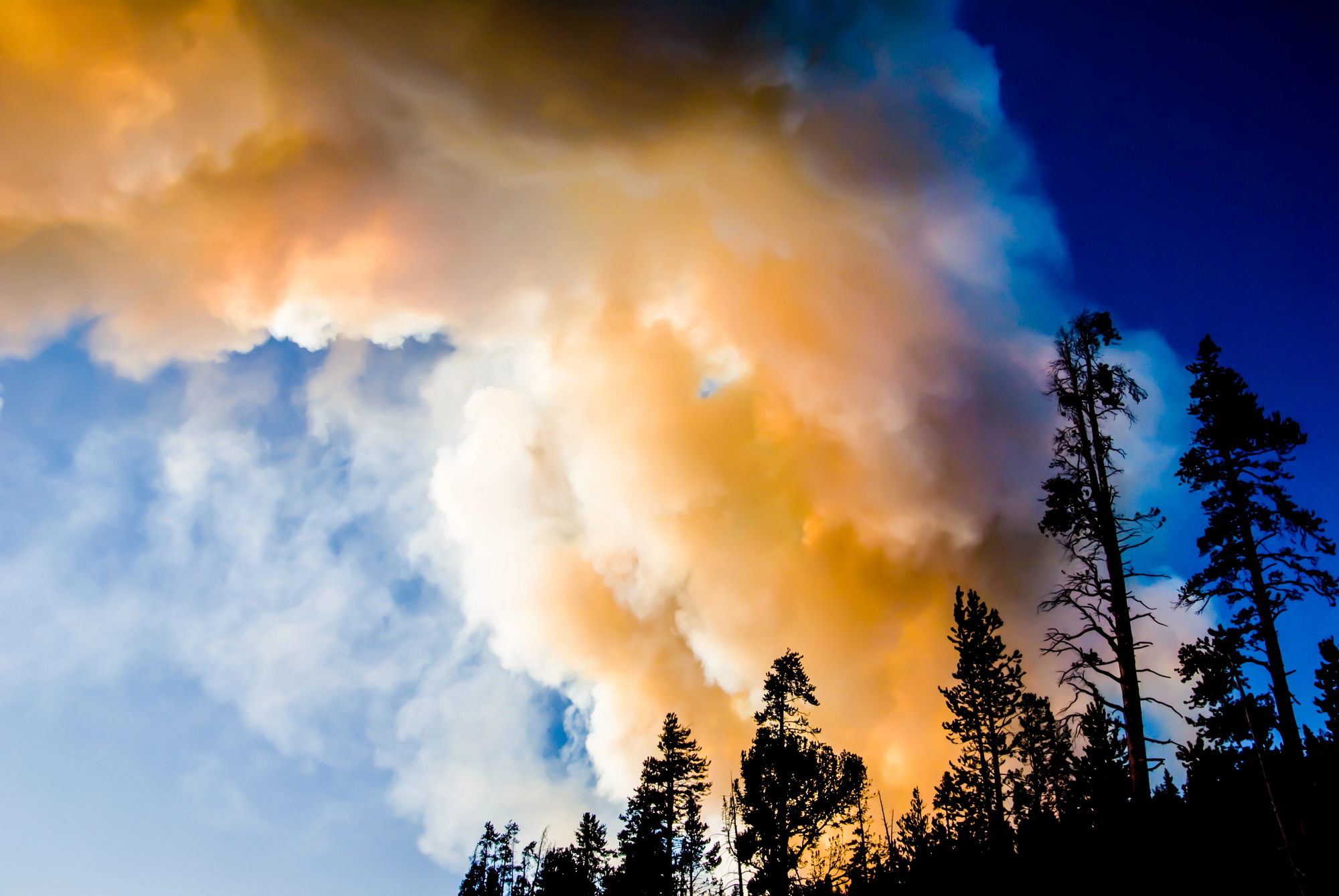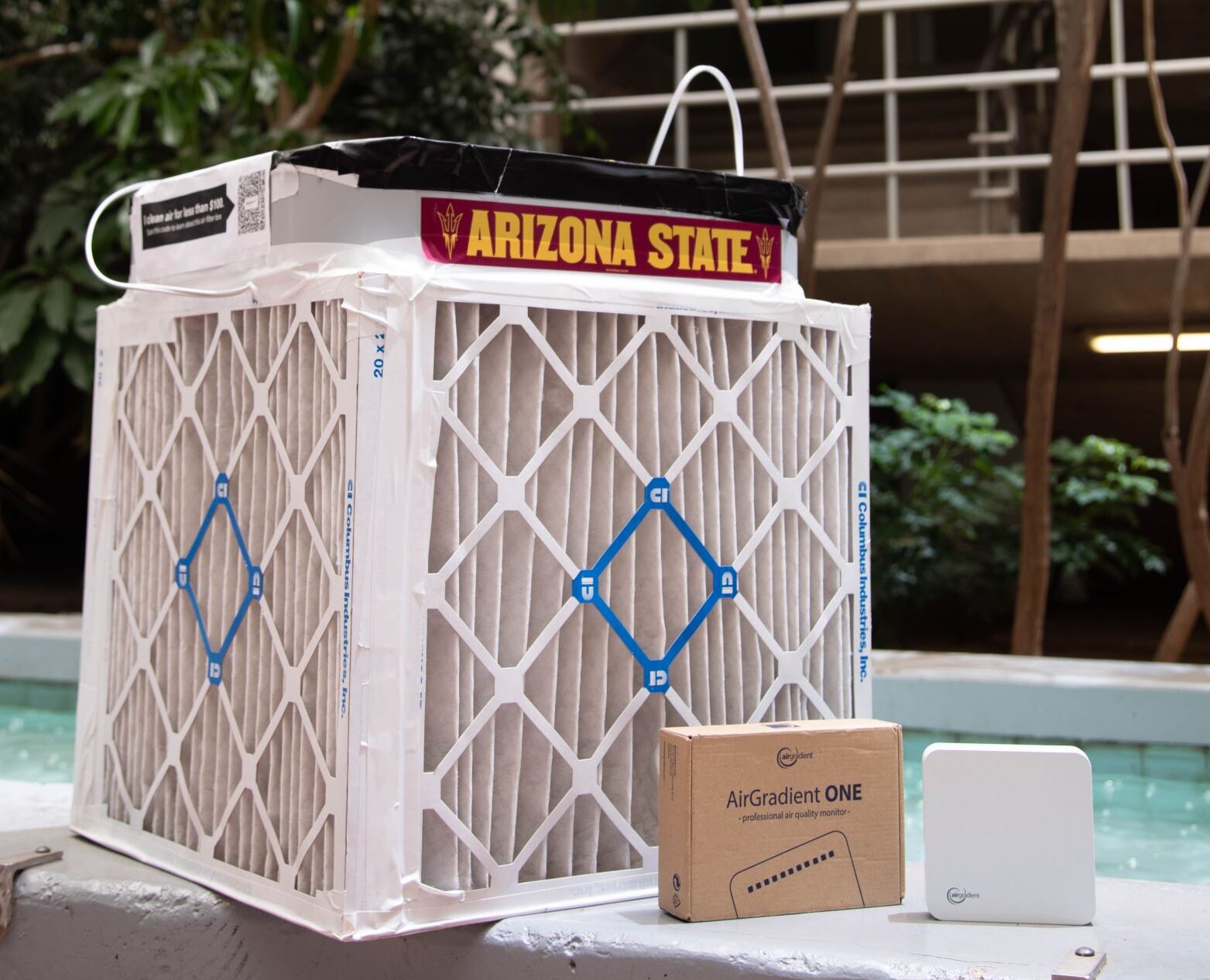Science Motivated

What is the Problem?
Air pollutants have been known to cause short-term respiratory irritation and long-term health problems, with demonstrated links to dementia (Wilker et al., 2023). Currently, most buildings lack the necessary sensors to even actively monitor air quality. Public spaces, such as libraries, schools, cooling centers, homeless shelters, and other facilities are already congested without the presence of excess outdoor pollutants infiltrating the indoor environment.
Links have been drawn between poor indoor air quality due to a lack of ventilation and falling test scores in schools. Further, similar studies have shown increased health risks for students (Bakó-Biró et al., 2012, Wargocki et al., 2020, Deng et al., 2023). Since these public settings typically don’t monitor their indoor air quality, how can they even begin to improve it?

What is Making it Worse?
Air quality in poorly ventilated spaces can worsen during events that produce high levels of pollutants. Events such as wildfires, or other weather phenomena, release high concentrations of particles and gases into the air. However, most buildings have been proven to not be equipped to filter out these pollutants effectively (Pantelic et al., 2019, Zhou et al., 2015). As a result, public buildings need to develop resiliency plans to better prepare and cater to the community’s needs in case of a wildfire smoke event.

Our Solutions
The WARM project aims to use cost-effective and easily deployable solutions to empower community partners to be better informed and prepared for increased pollution. One key intervention is the education about Corsi-Rosenthal (CR) boxes, which are homemade air filtration devices. Active filtration and remaining indoors has proven to reduce risks associated with wildfire pollution (Barn et al., 2007). These do-it-yourself devices have been proven to reduce airborne particulate matter and increase the ventilation and circulation of air (Jehn et al., 2024). Made from readily available materials, CR boxes are accessible and simple to set up. With the distribution of resources to build these boxes, WARM will also provide air quality monitors and training to better prepare facility staff members to recognize and respond to wildfire smoke events.
Citations
Bakó-Biró, Zs., Clements-Croome, D. J., Kochhar, N., Awbi, H. B., & Williams, M. J. (2012). Ventilation rates in schools and pupils’ performance. Building and Environment, 48(48), 215–223. https://doi.org/10.1016/j.buildenv.2011.08.018
Barn, P., Larson, T., Noullett, M., Kennedy, S., Copes, R., & Brauer, M. (2007). Infiltration of forest fire and residential wood smoke: an evaluation of air cleaner effectiveness. Journal of Exposure Science & Environmental Epidemiology, 18(5), 503–511. https://doi.org/10.1038/sj.jes.7500640
Deng, S., Lau, J., Wargocki, P., & Wang, Z. (2023). Associations between illness-related absences and ventilation and indoor PM2.5 in elementary schools of the Midwestern United States. Environment International, 107944. https://doi.org/10.1016/j.envint.2023.107944
Jehn, M. L., Andino, J. M., Russell, B., Rana, V., Akter, S., Creed, M. A., Sodhi, H., Holmes, B., Palit, T., Wani, J., & Wagstrom, K. (2024). Effectiveness of Do-It-Yourself Air Cleaners in Reducing Exposure to Respiratory Aerosols in US Classrooms: A Longitudinal Study of Public Schools. Building and Environment, 111603–111603. https://doi.org/10.1016/j.buildenv.2024.111603
Pantelic, J., Dawe, M., & Licina, D. (2019). Use of IoT sensing and occupant surveys for determining the resilience of buildings to forest fire generated PM2.5. PLOS ONE, 14(10), e0223136–e0223136. https://doi.org/10.1371/journal.pone.0223136
Wargocki, P., Porras-Salazar, J. A., Contreras-Espinoza, S., & Bahnfleth, W. (2020). The relationships between classroom air quality and children’s performance in school. Building and Environment, 173, 106749. https://doi.org/10.1016/j.buildenv.2020.106749
Wilker, E. H., Osman, M., & Weisskopf, M. G. (2023). Ambient air pollution and clinical dementia: systematic review and meta-analysis. BMJ, 381(8378), e071620. https://doi.org/10.1136/bmj-2022-071620
Zhou, J., Chen, A., Cao, Q., Yang, B., Chang, V. W.-C. ., & Nazaroff, W. W. (2015). Particle exposure during the 2013 haze in Singapore: Importance of the built environment. Building and Environment, 93, 14–23. https://doi.org/10.1016/j.buildenv.2015.04.029